Is UGC the Key to Optimizing Your Digital Shelf?

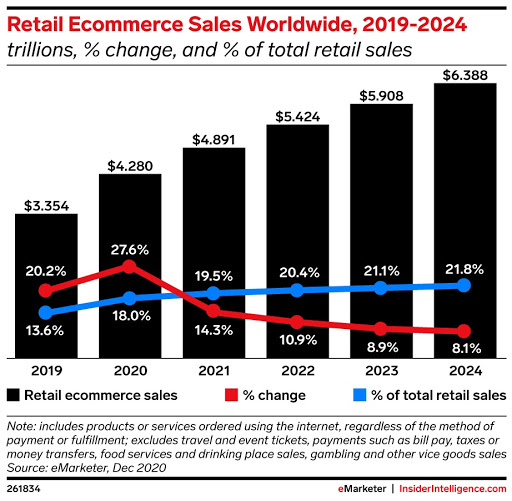 2020 was a year unlike any other. Events and vacations were canceled. Jobs were lost. And people spent a whole lot more time at home.
2020 was a year unlike any other. Events and vacations were canceled. Jobs were lost. And people spent a whole lot more time at home.
Consumers also spent more money online than ever before. According to eMarketer, worldwide eCommerce sales grew a whopping 27.6% in 2020.
Experts predict this growth won’t slow down anytime soon. In 2019, eCommerce accounted for 13.6% of total retail sales. In 2024, that number is expected to balloon to 21.8%.
Brands Must Optimize the Digital Shelf to Grow Online Sales
Explosive eCommerce growth doesn’t guarantee sales growth for brands that sell online, though. That’s because these days, consumers have nearly endless online shopping options. Brands must work hard to win and retain customers. And in order to do so, they must make it a priority to continuously optimize the digital shelf.
Essentially, the digital shelf is how and where your products are displayed online. Your digital shelf determines whether shoppers can find your products — and if they choose to buy them when they do find them.
There are myriad factors to consider digital shelf optimization is at hand, including product descriptions, product information, photography and digital advertising, just to name a few. However, there’s another important (yet often overlooked) tool winning brands leverage to optimize the digital shelf: user-generated content — also known as UGC.
How User-Generated Content Empowers Brands to Optimize the Digital Shelf
As the name implies, user-generated content is any content (think text, videos or photos) that consumers share on social media (including Instagram, Facebook, TikTok and others), brand and retailer websites, and various other platforms. In other words, it’s basically any content that a consumer, rather than a brand, creates and shares. However, in this blog, we’ll focus on two of the most impactful types of UGC that live on brand and retailer websites: ratings and reviews and customer questions and answers (Q&A).
Read on to explore how ratings and reviews and Q&A can help you optimize your digital shelf — and attract and convert more online shoppers.
UGC Fuels Product Discovery — and Boosts Traffic to Product Pages
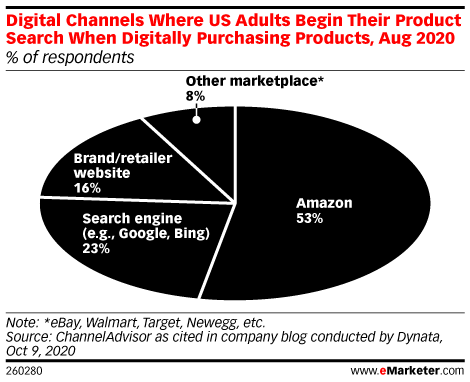 In some cases, a shopper will navigate directly to your dot com when they’re looking for a product you sell. But more commonly, they start their search elsewhere.
In some cases, a shopper will navigate directly to your dot com when they’re looking for a product you sell. But more commonly, they start their search elsewhere.
A survey from ChannelAdvisor found that 53% of consumers begin their online product search on Amazon, and nearly a quarter start on Google or another search engine.
According to Amazon data (cited in Search Engine Journal), the first three Amazon search results account for 64% of clicks. And per a Sistrix analysis, the higher the rank in Google search results, the higher the clickthrough.
Clearly, it’s critical to have a solid strategy in place to ensure your products rank well on these channels.
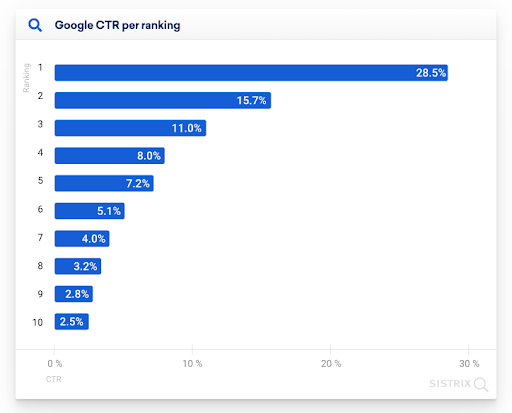
The good news is, UGC can help improve your search ranking on both Google and Amazon.
UGC Improves Ranking on Google and Other Search Engines
By consistently collecting ratings and reviews and Q&A, you always have a steady stream of fresh content — which Google and other search engines love. Search engines can crawl this content, which makes it easier for shoppers to find your product pages.
For example, let’s say a consumer is shopping for a gift for her two-year-old granddaughter. The child’s parents suggest a play sink. So the consumer navigates to Google and searches for “play sink for two-year-olds.” One of the top results is a toy sold on Walmart.com that includes the text of a review that includes these keywords. The result also includes the average star rating and review count for the product, which entices the shopper to click through to learn more and eventually, convert.
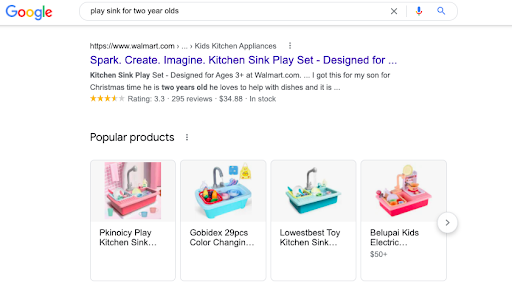
UGC Influences Ranking on Amazon
Reviews and Q&A also impact a number of factors that help determine how your products rank on Amazon, including seller authority and seller performance, among others.
Take a deeper dive into the impact of UGC on SEO in this blog.
UGC Increases Consumer Confidence and Conversion
Once a shopper finds your product page via search, Amazon, an advertisement, or another “front door,” it’s important that your product is portrayed in the best light and the shopper has all of the information they need to make an informed purchase decision. Otherwise, they’re likely to abandon the product page and go elsewhere.
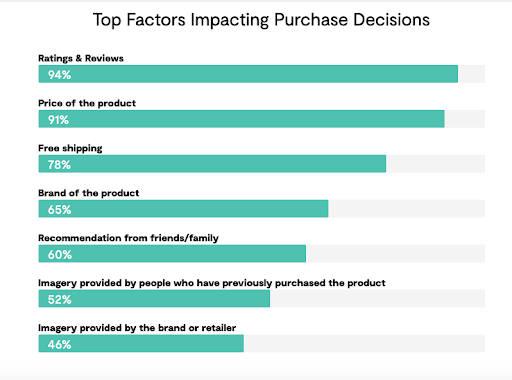 There are many factors that contribute to a great product page experience, including comprehensive product descriptions and professional photography — just to name a few. But oftentimes, brand-supplied content simply isn’t enough to give customers the confidence to convert.
There are many factors that contribute to a great product page experience, including comprehensive product descriptions and professional photography — just to name a few. But oftentimes, brand-supplied content simply isn’t enough to give customers the confidence to convert.
Increasingly, consumers seek out content from other consumers — including reviews. In fact, a new survey from PowerReviews found that 99.9% of consumers read reviews at least sometimes. The survey also found that the presence of reviews has a bigger impact on purchase behavior than other factors like free shipping and recommendations from family and friends.
When visitors have the opportunity to read reviews from others who have already purchased the product in question, it boosts their confidence — and their likelihood of purchase. In fact, reviews are proven to boost sales. According to our friends at Bazaarvoice, there’s a 128% lift in conversion on best-in-class websites when shoppers interact with ratings and reviews.
What’s more, shoppers who consume reviews spend more than those who don’t. Per Bazaarvoice, there’s a 159% lift in revenue per visitor when shoppers interact with ratings and reviews on best-in-class sites.
Of course, shoppers might still have questions after consuming all of the content on a product page. If a shopper was visiting a brick-and-mortar store, they could flag down a sales associate to answer their questions. But when they’re shopping online, many turn to the Q&A section of the product page.
When perusing questions from previous customers, a shopper might find their question has already been asked. And the answer can give them the confidence to purchase the product.
For example, a shopper might be considering a pair of shoes — but before she purchases, she wants to know if they work well for people with high arches. She scrolls down to the Q&A portion of the product page, does a search for “high arches” and finds that several other customers have asked similar questions. Based on the answers to the existing questions, it seems the shoes work well for high arches — so she adds them to her shopping basket.

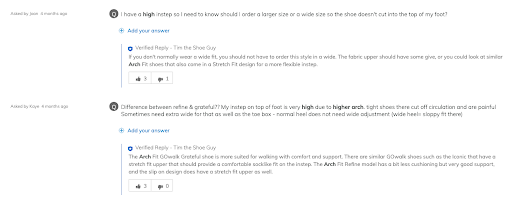
If the shopper submits their own question, a fast, accurate answer (ideally, in real time before the shopper has even had a chance to leave the product page) from the brand can wow the customer — and increase their likelihood of converting. Per Bazaarvoice, brands and retailers that respond to Q&A see a 98% average conversion lift.
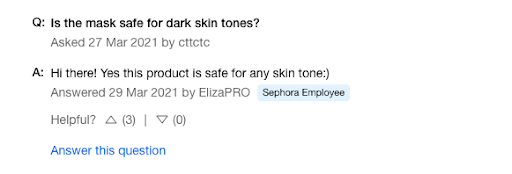
For example, a consumer shopping on a health and beauty retail site might be considering a skincare product. But first, they want to know if it’s safe to use on dark skin tones. So they post a question on the Q&A portion of the product page. The brand responds right away, letting them know it’s safe. So the shopper moves ahead with the purchase.
Insights from UGC Empower Brands to Improve Products and Experiences
The best brands are those that are laser-focused on the needs and expectations of their customers. But consumer preferences are always changing; a product that once resonated with customers can easily fall from favor if something better comes around.
Fortunately, UGC empowers brands to keep a continuous pulse on what customers want, need and expect so they can adapt accordingly. In fact, the insights from UGC can be a powerful tool to optimize the digital shelf.
For starters, insights from UGC can help you identify ways to improve existing products — or even develop completely new ones. For example, a children’s shoe brand might notice a trend of negative reviews similar to this one that mentions the placement and size of the velcro make it difficult to correctly fasten the shoes. The brand shares this feedback with the product development team who then makes changes to the velcro — and increases customer satisfaction.

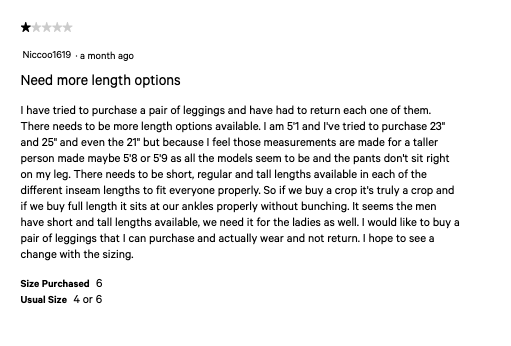
Or, an athletic brand might notice that several reviewers complain that a particular pair of pants doesn’t work well for their height. This may be an opportunity for the brand to offer the pants in different lengths to suit shoppers of various heights.
Insights from reviews and Q&A can also help you improve the experiences your shoppers have with your brand. For example, you might notice certain products have a large volume of questions from shoppers. You can look for themes in those questions — and potentially find opportunities to improve your product descriptions to cut down on questions.
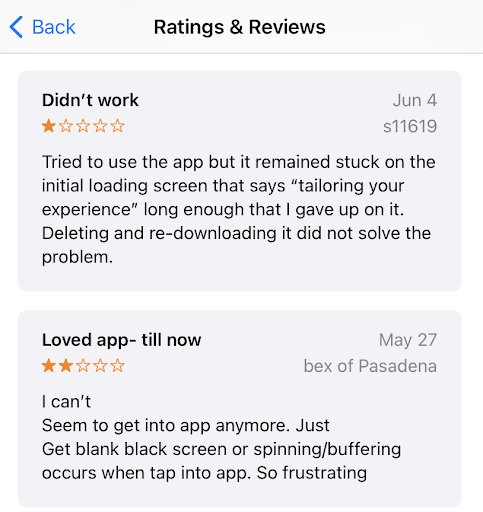
Also, if your brand has a mobile app, your app reviews can shed light on issues you wouldn’t have known about otherwise. For example, you might notice that several reviews mention that the app gets hung up during a particular step of the step-up process. You can share those insights with your mobile team so they can make it a priority to fix the issue — and improve your customers’ experiences.
How Reputation Studio Helps Brands Leverage UGC to Optimize the Digital Shelf
Ecommerce is growing — and that growth isn’t going to slow down anytime soon. But at the same time, brands face more competition than ever before when it comes to winning and retaining customers online.
In order to win greater online market share, it’s critical to consistently optimize your digital shelf. But these changes can’t be reactive based on every single question or review. That’s where Reputation Insights — part of Reputation Studio — comes in. This analytics tool helps marketers and product managers discover trends in their UGC so that the actions they take to optimize the digital shelf have the most impact.
Sign up for a quick demo of Reputation Studio to learn more.
Now’s the time to start leveraging user-generated content — including ratings and reviews and Q&A — to optimize the digital shelf and grow sales.